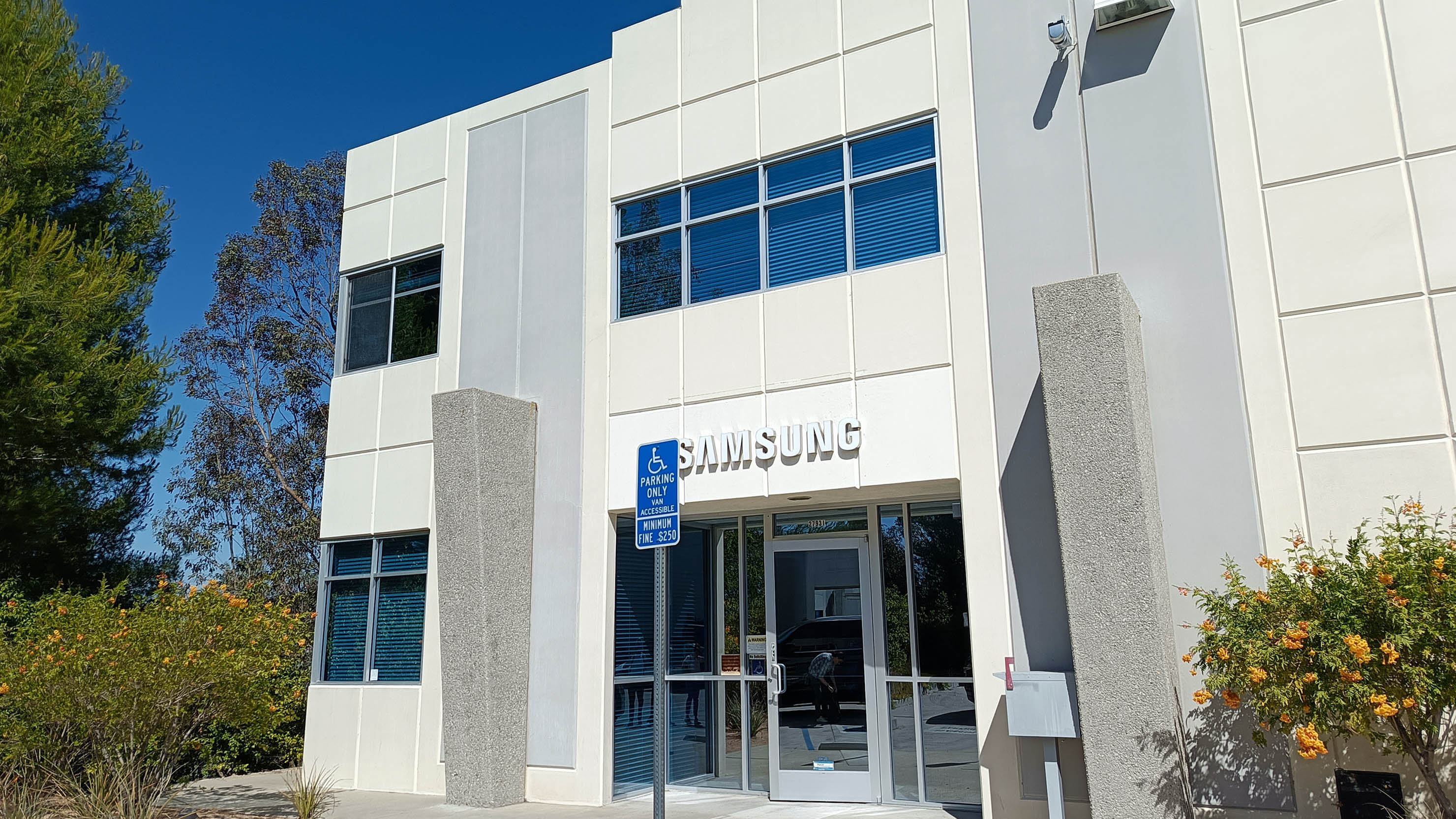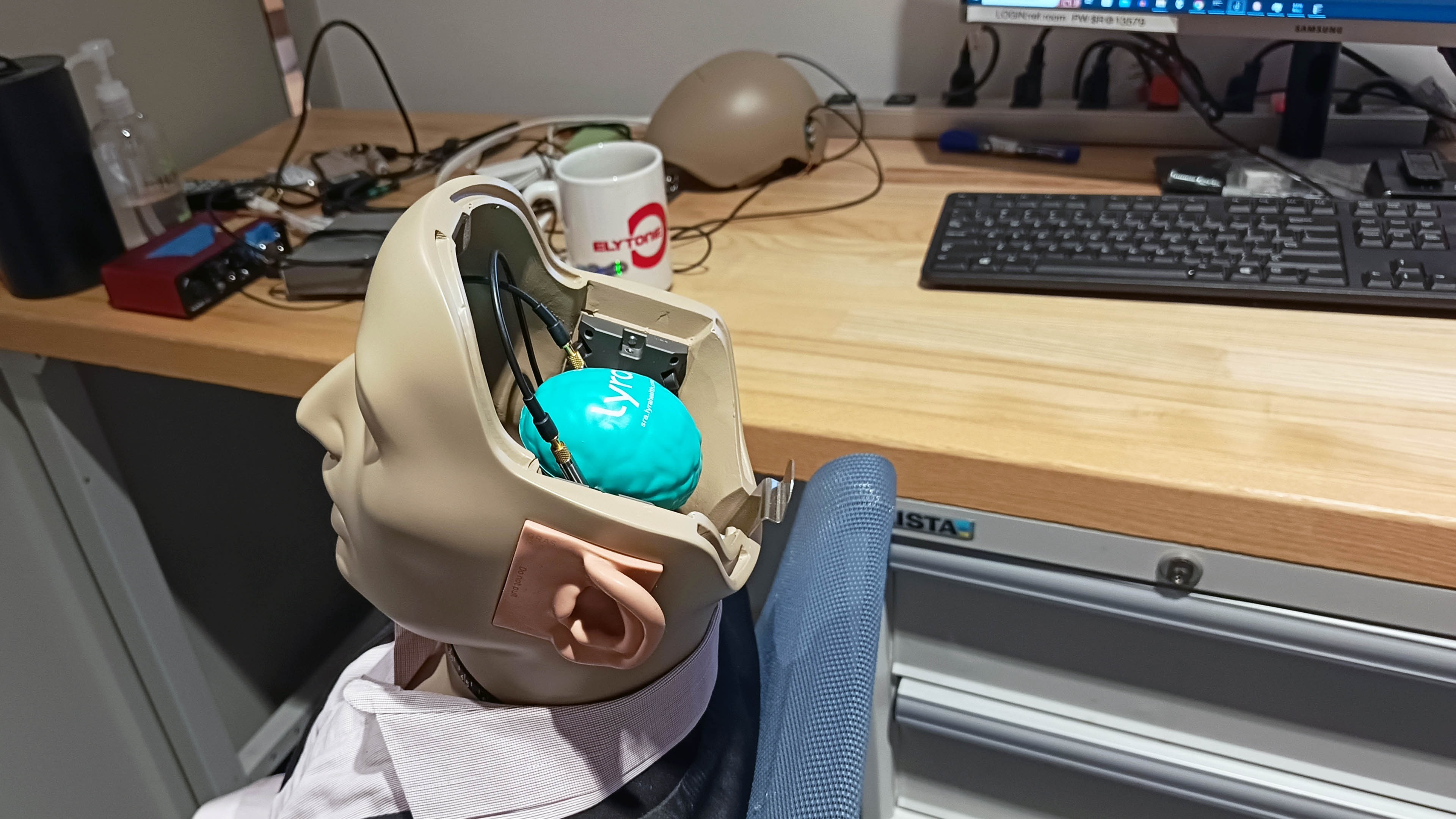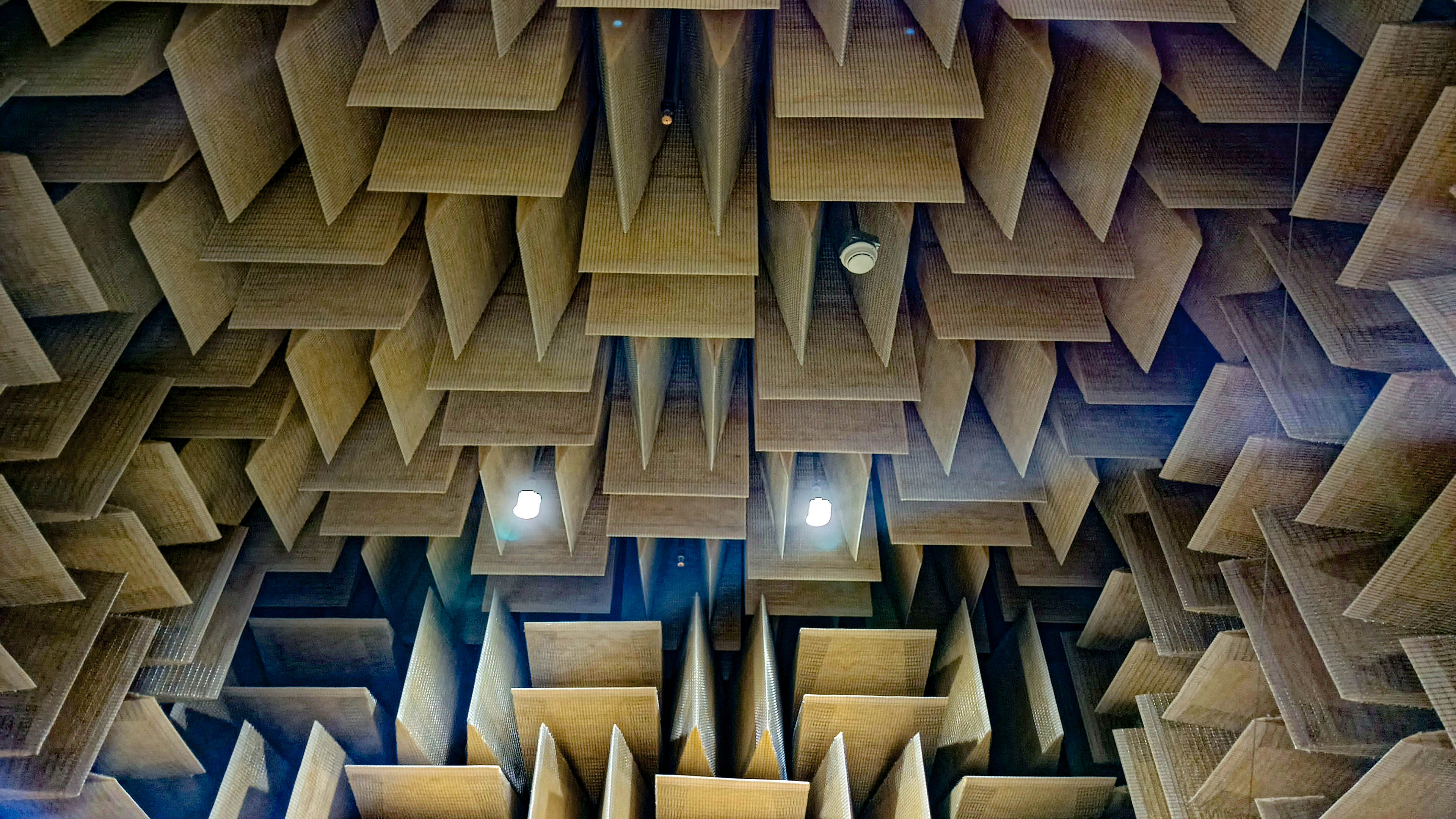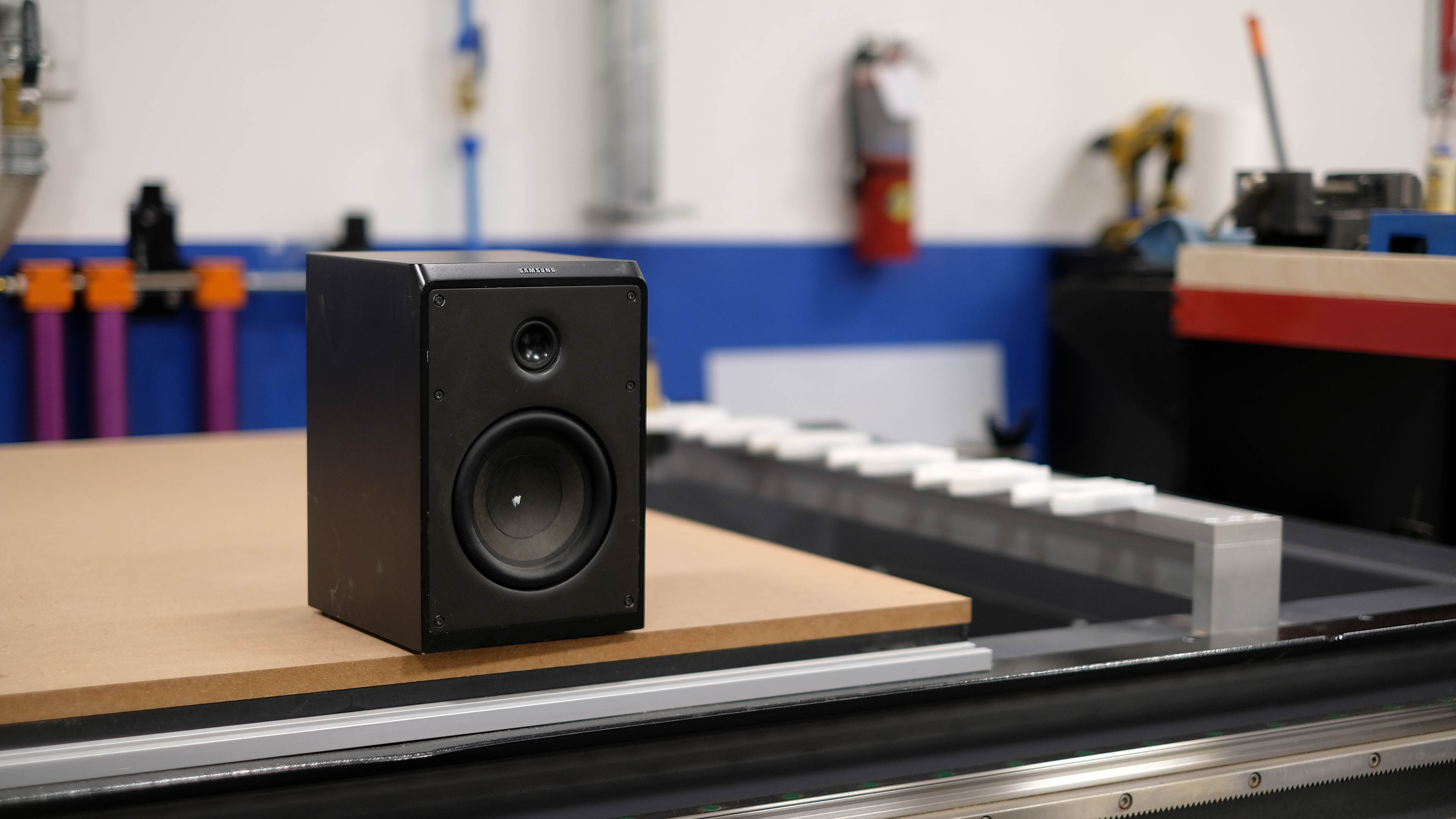4-hour laser scans, machine learning and revolving walls: we go inside Samsung’s Audio Lab to see how it makes soundbars and headphones
‘It can get quite loud and quite smelly, specially if something was to catch on fire, which is why we put the fan in’

Ever wondered who decides how your Samsung soundbar or Samsung earphones sound? You probably wouldn’t guess correctly.
Neither would we, until we visited the people who do just that job.
Around 270,000 people work for Samsung, but the major magic that goes into the sound of its key products doesn’t happen in the company’s Seoul HQ in South Korea. It happens in Samsung Audio Lab, which lives in a nondescript white building a 45-minute ride along the freeway, reliably tumescent with traffic, from central Los Angeles.
Inside, around 20-25 Samsung employees quietly guide how Samsung sounds, and they have done for a decade.
Samsung Audio Lab’s jobs is to make sure the most important products in the Samsung audio line-up impress, sonically. And, as VP Allan Devantier admits, some of Samsung’s products kinda sucked.
“[At] Samsung, we were known for making crappy sounding soundbars, just like the other consumer electronic companies,” Devantier told TechRadar.
After working a bit on Samsung’s early 360-degree home audio speakers in 2014, the labs took on the focus they have today: soundbars, headphones and tower speakers (plus some TV speakers). And the magic started to happen with in 2016 with the Samsung HW-K950.
Sign up for breaking news, reviews, opinion, top tech deals, and more.
It was one of the first Dolby Atmos soundbars. It cost an eye-watering $1,500. We called it “the next generation of sound” in our review, and it heralded the start of a decade of impressive Samsung soundbars dominating our list of the best soundbars, most recently culminating in a five-star rating for 2024's Samsung HW-Q990D.
When Samsung met soundbars
“When [the K950 soundbar] was launched, the first reaction was laughing, right? Like Samsung's going to have this über-expensive soundbar?” says Devantier.
“And then people heard it, and it immediately got pretty much everybody's 'soundbar of the year' [award], throughout the world.”
The secret sauce may be in the ways Samsung Audio Lab, well, isn’t very Samsung. Walk into the offices and you’ll see its walls plastered with iconic band posters from decades past. And the actual lab parts are more 'mad scientist' than 'sterilized white latex glove' on the lab scale.
“If you don't love music that's a big negative,” Devantier says of finding the right fit for someone who might work there.
Samsung Audio Lab’s higher-ups are full of folks who have worked for decades in some of America’s top speaker companies, including Harman (now Samsung-owned), Definitive Technology, JBL (also Samsung-owned) and others. These aren’t speaker engineers who cut their teeth in the 2010s portable Bluetooth speaker boom. One of Audio Labs’ engineers told us how, at home, he has a planar subwoofer based on his own audio research. These are some serious audio nerds.

The Audio Lab approach is, in part, about going completely overboard. Because that is what’s required, apparently. These folks apply the kind of rigorous testing and engineering you might expect of high-end hi-fi to product categories that often get little to no respect in the traditional audio world, like soundbars.
“I made comments like, we don't compare the sound of our products to other consumer electronic companies. We compare to companies like B&W. And we got laughed at,” says Devantier.
But what does this actually mean in practice? To an audio egghead like Devantier, it’s down to “blind listening tests, good measurements, directivity dispersion and resonances.” To the rest of us, it means the implementation of some seriously clever engineering and some very expensive kit.
The soundless room
The highlight of Samsung Audio Lab to the casual outsider is its huge anechoic chamber. Samsung has spent millions of dollars making and maintaining this over the years. It consists of an intimidating forest of fibreglass triangles covered in a wire mesh. These cover the floor, the ceiling, the walls. They deaden the sound of the room by absorbing all reflected waves.
If you’ve ever read about someone’s experiences of these anechoic chambers, you’ll always hear the a similar line: it feels weird, eerie and intense just to be in a room in which there’s no reflected sound. Our brains are not wired for it.

Any speaker on test is placed in the middle of this room, mounted towards the center, while a boom arm bearing a slew of microphones is moved in an arc, controlled by a giant pulley system and software designed in-house. This lets Samsung Audio Lab 'hear' what any speaker sounds like in three dimensions, free of any coloration.
“To measure these kind of things [such as resonances] you need an anechoic chamber. You can’t measure these things with gated measurements. These companies that have machines that filter out room reflections? They cannot measure these things. They literally don’t have the resolution,” says Devantier.
Audio Labs also has a second anechoic chamber designed to measure wall-mounted speakers too, like those of TVs. In this case, the door of the chamber is literally the 'wall' on which the test device is mounted.
This isn’t the beginning of the process, of course. While there’s an element of freewheeling ambition you can almost smell at Audio Lab, the team does still work on Samsung-HQ approved projects.
“We get a request from headquarters on the new projects,” principal audio engineer Jerry Moro told us.
One they talked about during our visit was a shrinking of soundbar drivers by a handful of millimeters, while avoiding loss of performance.
“They’re always looking to make things smaller and slimmer,” says Moro.
Drivers like this will initially be modelled using machine learning-based software tools, as a proof of concept. But once a prototype has been made, there’s a special room in which Audio Lab can literally see how it moves while playing sound.
The driver is mounted into a laser array that scans the movement of the speaker cone, using the reflection delay of an infrared pulse to monitor its position in real time.

Why? You want a speaker driver to be as piston-like as possible across its surface, meaning it doesn’t start rippling away at the sides when under pressure. That sort of uncontrolled motion causes linear distortion, which doesn’t sound good.
“It’s so easy to design a crappy driver. It takes a little more more thought to go into finding out what’s causing the non-linearity and how to get rid of that, to translate into lower harmonic distortion and better sound,” says Moro.
“We can do a coarse scan that might take an hour. But we like to do a really dense scan… it could take three of four hours,” Moro says of the laser-scanning process, which pores over the driver surface by the millimeter.
From design to torture
Samsung Audio Lab has its own prototyping lab, including a CNC machine, and will have a 3D printer before too long, after the cost of getting projects done in the local area rocketed. The Lab can take its driver designs and build them into what look like final products, with no factory involved.

Next up in the tour comes the torture test room, where speakers are driven hard to see if their designs are sound (so to speak) over a longer period, ahead of actual production.
“It can get quite loud and quite smelly in here,” Moro told us as we went inside the super-sound-insulated room-within-a-room. “Especially if something was to catch on fire, which is why we put the fan in.”
“100 hours at rated power is pretty good accelerated testing,” says Moro, although of course Samsung’s final designs will get far longer real-world use testing before they hit shelves.
Samsung Audio Lab’s tests we’ve talked about so far can tell how a speaker sounds in isolation. And thanks to the way it provides a sort of three-dimensional view of that sound, its behavior in a real room can be modelled.
But the team also does real listening, in rooms designed to emulate the real thing. That entails wall-mounted panels that cause the kind of semi-chaotic reflections you’d hear in the average home.
“You could look look at the [sound measurements] of a speaker and know if the speaker sounded good or not. But it didn’t actually tell you how the speaker sounded in a room. Because it didn’t relate to the direct sound, the early arrival and the later arrivals,” says Sound Lab VP Devantier.
Those early and late arrivals are the sound reflections you get bouncing off parts of the room, including the wall behind a speaker – it’s everything bar the sound travelling directly from the speaker to your ear. This stuff is important.
We got to sit in a testing room and listen to a couple of products, just like an Audio Lab insider. The highlight? Getting a feel of how this stuff actually works during product development was nice, sure. There are iPad-based listening tests that let an upcoming product be put up against the competition.
But the real highlight was Samsung Audio Lab’s revolving TV wall. It lets those listeners hear multiple setups within a few seconds of each other, like a spinning prize display from a 1970s gameshow. No changing of position. No unplugging.
Samsung must have spent a fortune on this, not least because it required the use of a laser-enabled system shut-off to comply with California’s health and safety guidelines. And it all goes on behind an acoustically transparent screen, so the listeners won’t be swayed by the name on the box when participating in these tests.
Audio Lab couldn’t exist under the auspices of most companies. It’s too expensive, too close to a product-development luxury. And, judging by the frankness of Devantier on some topics, too independent for most to stomach. That it exists under Samsung, which can at times seem pretty buttoned-up and conservative as a company, makes it all the more remarkable.
Few of us probably have enough of the requisite Ps – passion, patience and PhDs – to realistically aspire to work at Samsung Audio Lab. But perhaps we should be grateful it exists, as Samsung would be less interesting without it, and would be pushing other companies to up their game less.

Andrew is a freelance journalist and has been writing and editing for some of the UK's top tech and lifestyle publications including TrustedReviews, Stuff, T3, TechRadar, Lifehacker and others.